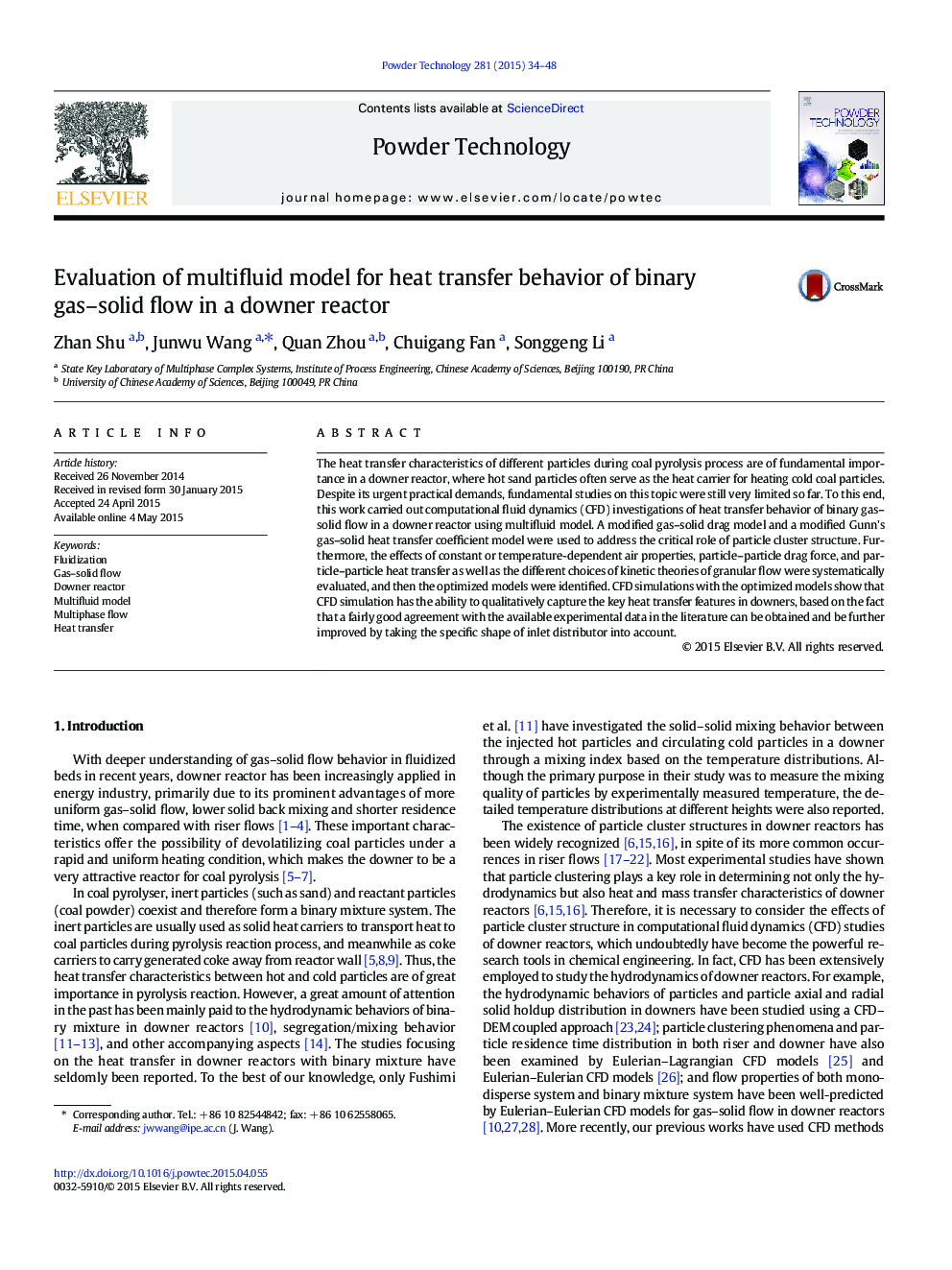| Article ID | Journal | Published Year | Pages | File Type |
|---|---|---|---|---|
| 235457 | Powder Technology | 2015 | 15 Pages |
•Heat transfer characteristics of binary gas–solid flow are studied.•Hydrodynamics of a downer reactor is simulated using multifluid model.•State-of-the-art multifluid model for heat transfer is assessed.
The heat transfer characteristics of different particles during coal pyrolysis process are of fundamental importance in a downer reactor, where hot sand particles often serve as the heat carrier for heating cold coal particles. Despite its urgent practical demands, fundamental studies on this topic were still very limited so far. To this end, this work carried out computational fluid dynamics (CFD) investigations of heat transfer behavior of binary gas–solid flow in a downer reactor using multifluid model. A modified gas–solid drag model and a modified Gunn's gas–solid heat transfer coefficient model were used to address the critical role of particle cluster structure. Furthermore, the effects of constant or temperature-dependent air properties, particle–particle drag force, and particle–particle heat transfer as well as the different choices of kinetic theories of granular flow were systematically evaluated, and then the optimized models were identified. CFD simulations with the optimized models show that CFD simulation has the ability to qualitatively capture the key heat transfer features in downers, based on the fact that a fairly good agreement with the available experimental data in the literature can be obtained and be further improved by taking the specific shape of inlet distributor into account.
Graphical abstractFigure optionsDownload full-size imageDownload as PowerPoint slide
